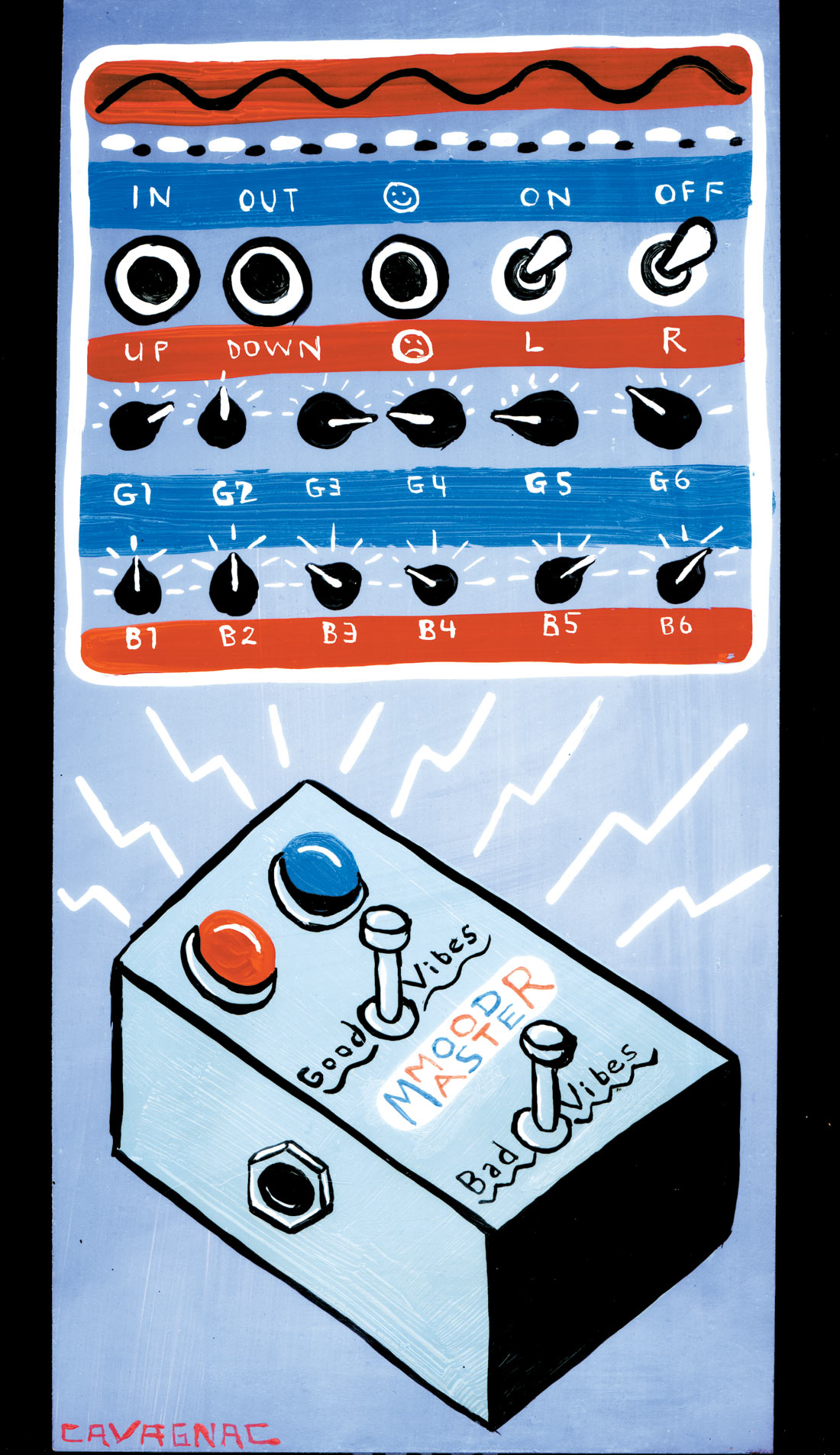Karma is a new microphone brand based out of Cupertino, CA. The units are produced in China according to Karma's specifications. But let's make something clear right away: this is not another line of vintage mic clones. Both in sound and appearance, Karma microphones are clearly setting out on their own path. I happened to stumble across them on eBay several months back. I won the auction for a K35 FET and decided to try it out. After just a few sessions, I thought this could be a great mic for Tape Op readers because of its unique sound, low noise-level, and affordability.
The mic comes packed in a hard-shell case that was clearly made to match the mic. A large, but very usable shockmount is also included. Considering that some companies charge upwards of $150 for a decent shockmount (let alone a case), this was a nice touch.
But it's the mic's appearance that will grab your attention. I've been trying to come up with descriptions for this mic since I saw it. The grill looks like a matte-silver Royer R-121 on steroids. The body is wrapped in a black, simulated-velvet, snake-skin material that everyone feels compelled to pet when they see it. It's like the love child of Morticia Adams and Ritchie Sambora. There, I said it.
As far as the insides, the K35 uses a 1.07'' gold- sputtered, 3-micron diaphragm. The unit provides a choice of cardioid, figure-8, and omnidirectional patterns. A 10 dB pad and low-cut filter are also installed. Karma's website provides additional details, including some refreshingly truthful frequency response plots. In a time where many companies fudge the plot scale to produce a smooth 20 Hz to 20 kHz response, Karma tells it like it is. Their plot looks like a 12-week stock report. But we all know specifications are one thing, and real-world sound is another.
We tried the K35 on a variety of sources. The multiple patterns came in handy on acoustic guitar, where omni tended to downplay any low-mid mud from our dreadnought. It can be a good drum room mic, and it's especially useful if you end up compressing the snot out if it. We liked putting it at the drummer's chest level about 12 ft away from the kick, off center. In short, the K35 has a unique sound that is a blend of hyped and true at the same time. The best way to explain is that tracks using the K35 tended to sit well in a mix. We rarely had to use EQ, especially on vocals. Speaking of vocals, that is where the Karma earned its keep. R&B producer Norman Connors was tracking a new project for a female vocalist. Mr. Connors is in love with our 1968 Neumann U 87. Plus, he's old school on stuff like vocal mics. We begged him to let us blind test the K35 versus the U 87. (We told him he was doing it "for the kids". Exactly what kids and why they needed it, I don't know, but the argument worked.) Everyone chose the K35 for this project. Mr. Connors is even thinking of getting a K35 for his traveling kit. Meanwhile, Andrew, our tracking guru, started trying the K35 when other female vocalists were in session. In every case, he chose the Karma over some really good mics. For male vocals, it always depended on the voice type. But when it fit, the K35 was solid. One key note: we did our blindfold comparisons while playing the accompanying music tracks. Some people test vocal mics naked. But we wanted to see how everything fit in the mix. After all, that's where the vocal ends up.
In use, we only had one issue and that dealt with the polar-pattern switch. Selecting figure-8 or omni gave a distinct click verifying your setting, but the switch was loose and jiggled in the cardioid position. (The manufacturer assures me that this was an issue with early units, and the matter has been resolved in subsequent releases).
Karma has come out of nowhere to offer a fresh look and unique sounds in a market flooded with disposable mics. A list price of $549 would be fair for the K35. So only a fool would pass up getting one (or a pair) at the current sale price. The company offers a free trial too. ($252 sale price, direct; www.karmamics.com)




_disp_horizontal_bw.jpg)